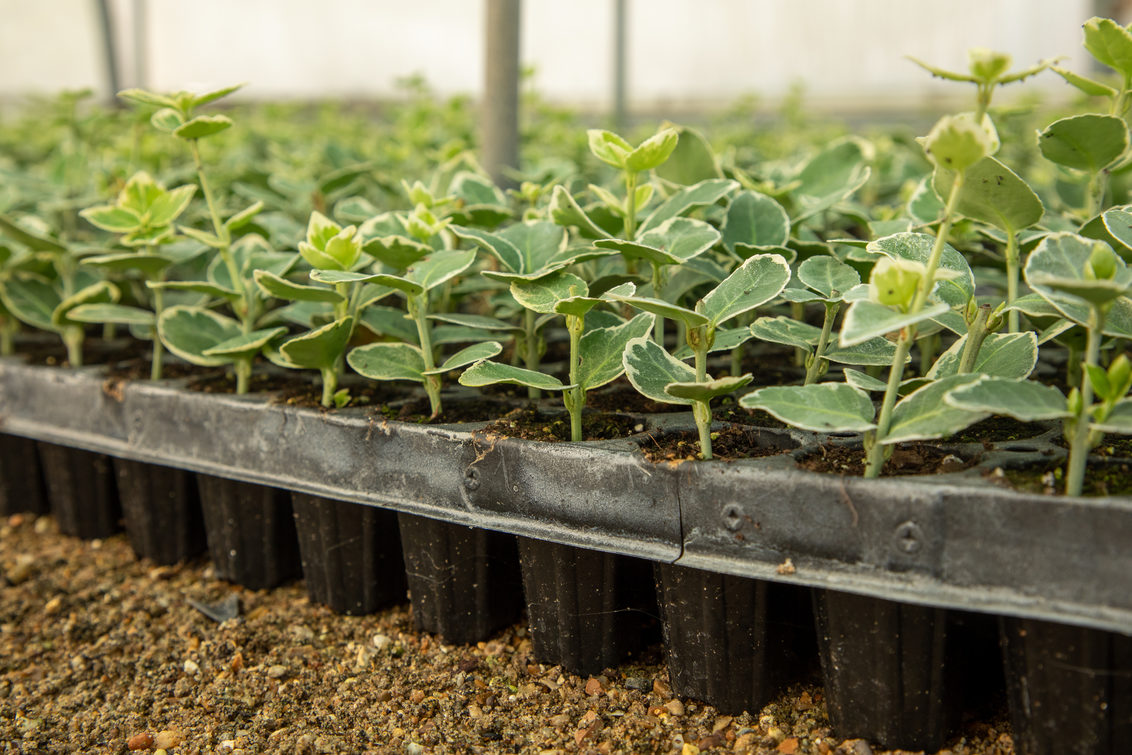Active growth for crops with resilience

Ornamental crops can come under stress of one kind or another at any time but spring is arguably when it’s most likely.
Tender young shoots and buds will still be at risk from cold damage at that point in the year whether plants are on the nursery or in transit in the supply chain. It’s the stress caused by overheating, lack of water and too much or too little light, however, that can be more difficult to spot and manage.
Sudden changes in the weather, for example from cool and dull to hot and bright, can be particularly damaging if plants can’t adapt fast enough – think how quickly the temperature can climb in a greenhouse on a warm, windy day that would keep the vents closed. Modern monitoring systems (which we talked about in an earlier blog) can help you manage the greenhouse environment much more responsively; fans to keep the air moving and stop hot spots can also help.
Research into crop quality issues thought to be linked to stress, such as that conducted on pansy mottle for AHDB in the last few years, have helped our understanding of how to grow more resilient plants, which are more able to carry their quality through the supply chain.
Much comes down to how well the plant is pulling up water through the roots and transpiring through the leaves. That’s how it regulates its temperature – if the stomata close up due to water stress, the leaf will quickly overheat and the plant will divert valuable resources into protecting itself from the consequences.
The key to a resilient plant is an environment that supports really active growth. You want plants that are transpiring well, pulling up water which will cool the leaves and keep the nutrient supply matched to the demands of growth and development.
That in turn needs a well-developed root system with plenty of root hairs. A plant sitting in an over-wet medium will have a poorly developed root system, few root hairs and little chance of drawing enough water when a dull, cool spring morning turns warm and bright in the afternoon.

It’s vital to match irrigation to plant demand right from the plug or liner stage, which can be achieved by making irrigation scheduling less subjective, so the crop is watered the same whoever is on duty. Automated systems use moisture probes in pots or trays linked to the irrigation controller, but you can also weigh pots or trays to establish fully-watered, fully-dry and the two or three points in between on which to base your irrigation decisions.
For most protected crops, while you want to avoid over-wet media, you also want to avoid over-dry air. Monitoring relative humidity (RH) is useful for disease management but vapour pressure deficit, or VPD, (as tomato and cucumber growers now use) is worth considering as it tells you more about how dry the air is.
Work on pansy mottle found you can reduce stress by irrigating in the middle of the day to bring down both temperature and VPD, rather than early in the morning as many aim for, though you may then need to consider shading to avoid leaf scorch. Non-crop areas can be damped down – the evaporation will have a cooling effect – if the crop is already well watered.
While summer shade is important, too much can lead to poor growth and makes the plant less resilient when moved outdoors. Too little light but too high a temperature can be the worst of all worlds.
With root vigour playing such a key role in stress resilience, it’s important to transplant as soon as the root system is well-enough developed.
If production schedules allow, consider hardening plants off before dispatch, as is routine in vegetable transplant production, by progressively reining in on temperature and irrigation. This helps the plant become more robust against temperature extremes and drying out.
In my next blog we’ll see how you can help your crop’s biochemical resilience to stress.

